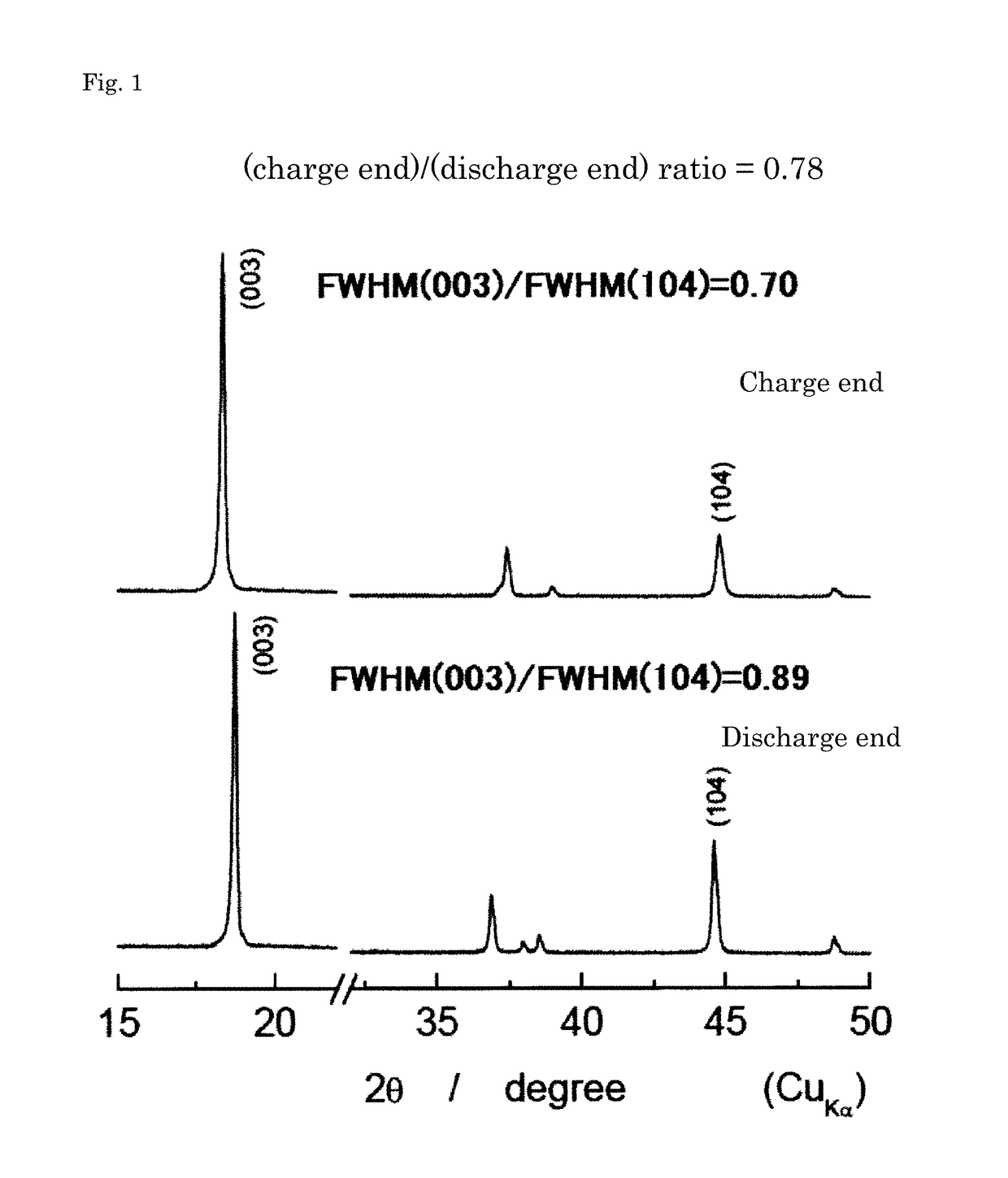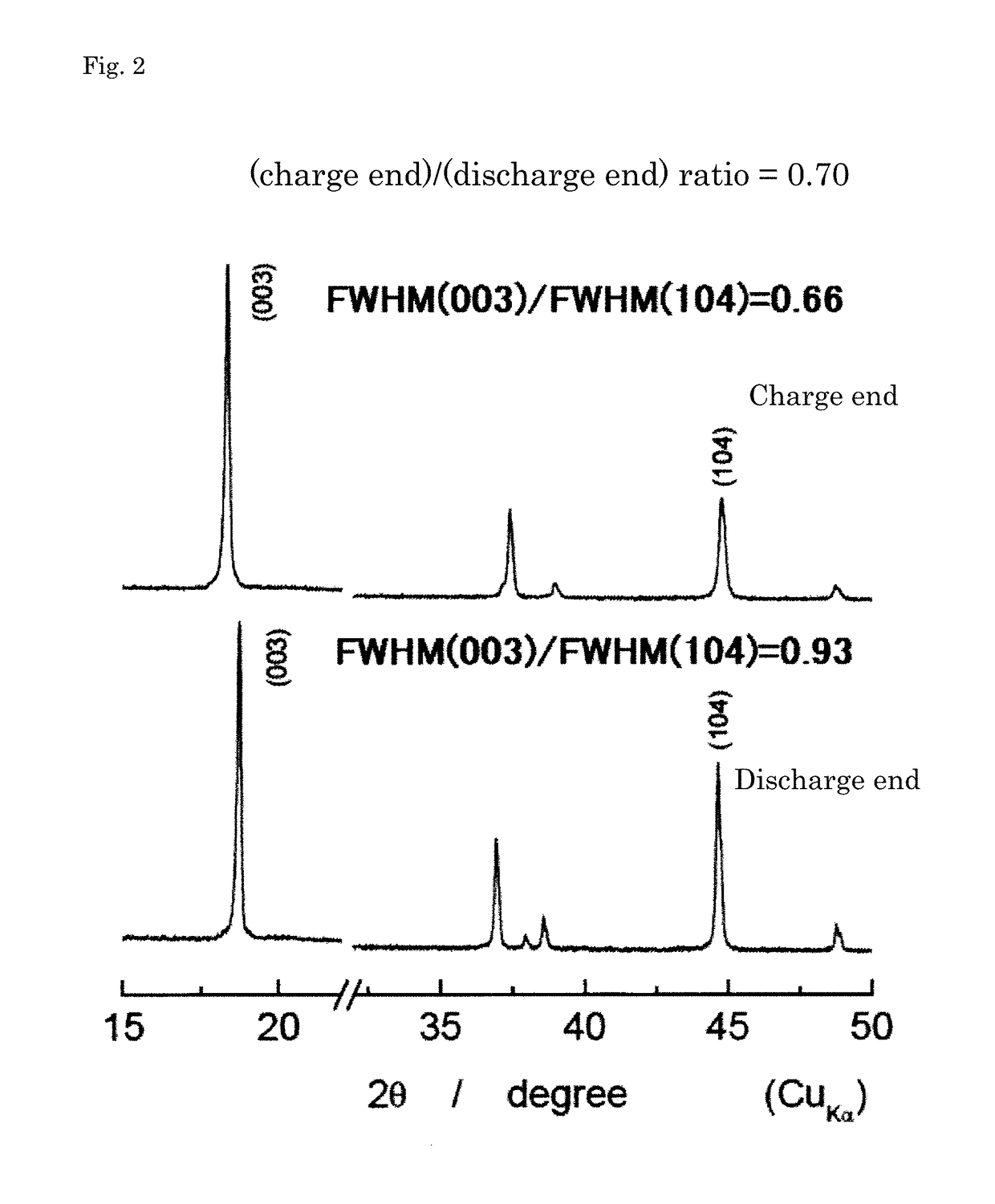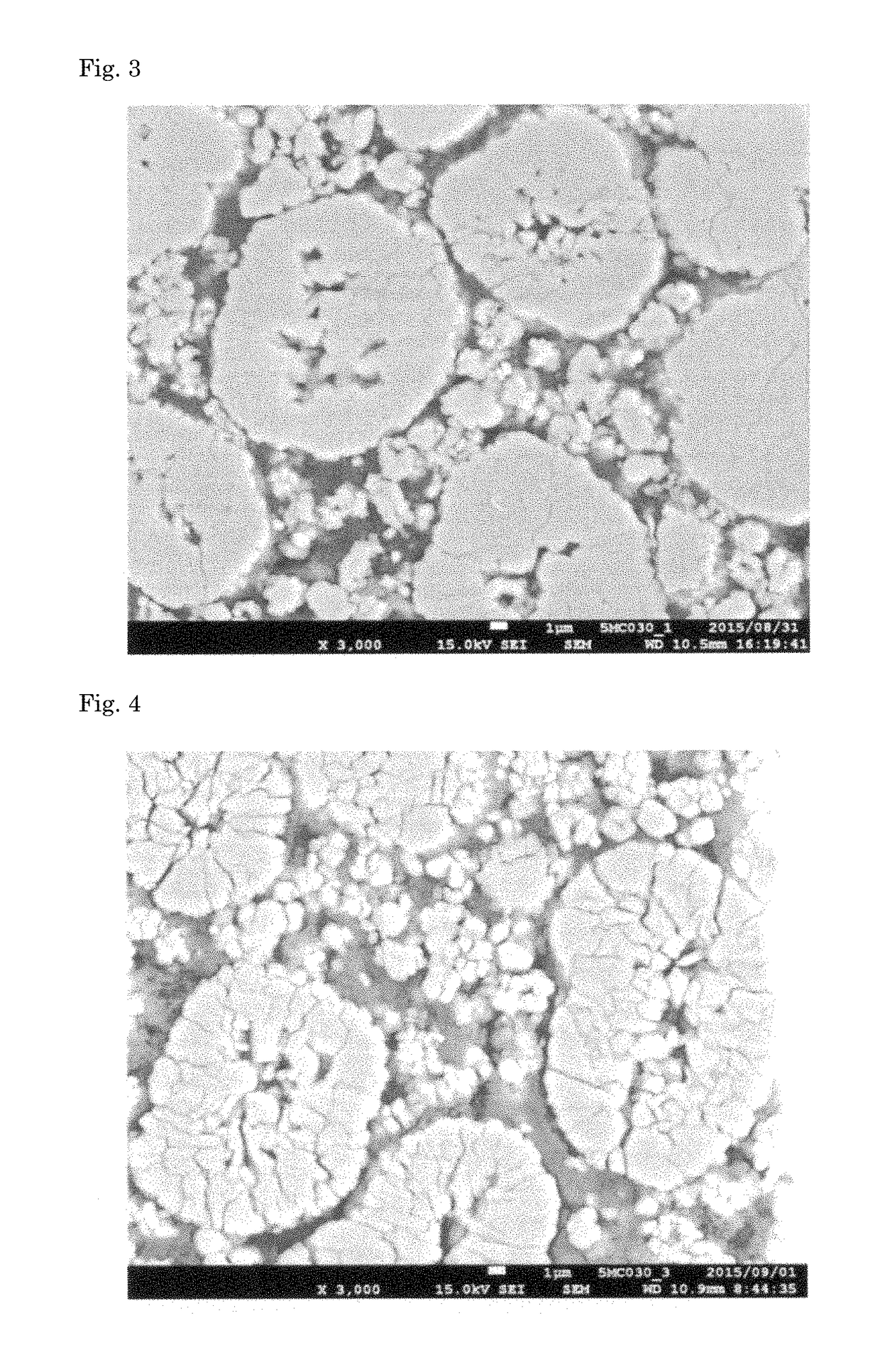Positive active material for lithium secondary battery, method for producing precursor of positive active material, method for producing positive active material, positive electrode for lithium secondary battery, and lithium secondary battery
a lithium secondary battery and active material technology, applied in the direction of wound/folded electrode electrodes, nickel compounds, sustainable manufacturing/processing, etc., can solve the problems of poor charge-discharge cycle performance and maintain crystal structure, and achieve the effect of improving charge-discharge cycle performan
- Summary
- Abstract
- Description
- Claims
- Application Information
AI Technical Summary
Benefits of technology
Problems solved by technology
Method used
Image
Examples
example 1
Example 1-1
[0172]
[0173]In preparation of a positive active material for a lithium secondary battery, a hydroxide precursor was prepared using a reaction crystallization method. First, nickel sulfate hexahydrate (350.5 g), cobalt sulfate heptahydrate (374.8 g) and manganese sulfate pentahydrate (321.5 g) were weighed, and totally dissolved in 4L of ion-exchange water to prepare a 1.0 mol / L sulfate aqueous solution of which the molar ratio of Ni:Co:Mn was 1:1:1. Next, 2 L of an aqueous solution obtained by dissolving ammonium fluoride in ion exchange water so as to attain a concentration of 0.01 mol / L was poured into a 5 L reaction tank, and an Ar gas was bubbled for 30 min to remove oxygen contained in the ion-exchange water. The temperature of the reaction tank was set at 50° C. (±2° C.), and the reaction tank was set so as to have a sufficient convection therein while the contents in the reaction tank was stirred at a rotation speed of 1500 rpm using a paddle impeller equipped with...
examples 1-2 to 1-5
[0177]Except that the addition amount of lithium fluoride in preparation of the mixed powder in the firing step was changed to 0.012 g, 0.018 g, 0.024 g and 0.030 g, the same procedure as in Example 1-1 was carried out to prepare lithium transition metal composite oxides LiNi1 / 3Co1 / 3Mn1 / 3O2 in Examples 1-2 to 1-5, respectively.
examples 1-6 and 1-7
[0178]Except that lithium sulfate (0.012 g) or lithium phosphate (0.008 g) was added in place of lithium fluoride in preparation of the mixed powder in the firing step, the same procedure as in Example 1 was carried out to prepare lithium transition metal composite oxides LiNi1 / 3Co1 / 3Mn1 / 3O2 in Examples 1-6 and 1-7, respectively.
PUM
| Property | Measurement | Unit |
|---|---|---|
| crystalline size | aaaaa | aaaaa |
| molar ratio Li | aaaaa | aaaaa |
| molar ratio Li | aaaaa | aaaaa |
Abstract
Description
Claims
Application Information
 Login to View More
Login to View More - R&D
- Intellectual Property
- Life Sciences
- Materials
- Tech Scout
- Unparalleled Data Quality
- Higher Quality Content
- 60% Fewer Hallucinations
Browse by: Latest US Patents, China's latest patents, Technical Efficacy Thesaurus, Application Domain, Technology Topic, Popular Technical Reports.
© 2025 PatSnap. All rights reserved.Legal|Privacy policy|Modern Slavery Act Transparency Statement|Sitemap|About US| Contact US: help@patsnap.com



